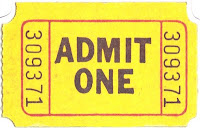This has been a wacky year. At the beginning of the season, all the players were fresh faced and healthy from spring training camp and every fan thought that this was going to be the year for her team. This year, the Seattle Mariners were supposed to be a shoo-in for the playoffs, and the Rockies, fresh from the series last year held promise in the West. But both of those teams are way back in the pack. The surprise of the season has been the Tampa Bay Rays (formerly the Devil Rays) who have finished last in their division every year but one in their existence and have never made the playoffs, but who this year are smoking the AL Eastern Division. The Arizona Diamondbacks have only recently risen above a .500 Win/Loss percentage and they are leading their division. And look out, here comes the Cubbies. Go figure. That’s baseball.
So here is how a team makes it to the World Series:
Opening Day happens the first week of April. (Mark your calendars!) During the regular season, teams play a season of 162 games, usually at a rate of six games a week with a regular day off. The American League has fourteen teams divided into Central, Western, and Eastern Leagues. The National League has sixteen teams divided into Central, Western, and Eastern Leagues. Here is the breakout:

Up until recently, teams from the AL never played the teams from the NL until the World Series, but in 1997 the rules were changed to allow “Inter-league Play” which allows NL teams to play AL teams, meaning the Chicago Cubs can play against the Chicago White Sox and the New York Mets can play the New York Yankees. Baseball is rooted thickly in tradition and is slow to move, but every once in awhile it will change in order to attract more fans and spice up the game.
The post season begins in October and the teams in the October playoff games are determined by the leaders in each Division according to their win-loss percentage. The League Standings are listed on your sports page. Here is a sample from my local paper on August 27, 2008

You can see that Tampa has a strong showing with a .608 Win/Loss percentage, and Los Angeles is coming in really strong at .611. (Don’t even bother looking at Seattle. It’s a sore point with The Girlfriend.) But The Boyfriend and The Sister Turned Red Sox Fanatic is still hoping that Boston will pull forward and erase the 3 ½ games they are behind or at least secure the Wild Card position if they can stay ahead of Minnesota. The Softball Diva and Terminal Yankees Fan is in despair because 9 games back is tough to over come, though if anyone can do it, it is those damn Yankees. And Steve, the Hopeful, Hopeless Cubs Fan is dizzy with joy with the chance that Lou Piniella and the Cubs are going to go all the way.
The last game of the regular season is usually played in the very first part of October. At that point, the three winners from each League Divisions and one “wild card” from the League play each other in a best of five series (all the other post game series are best of seven.) , The wild card is again a recent addition to post game play and I like it. The wild card is chosen by taking the team in each division (Central, East and West) with the second best win loss percentages and choosing the one with the best. Sometimes in a strong league, the wild card might actually have a better record than another Division leader. (Look at Boston versus Chicago White Sox.) Four wild card teams have actually gone on to win the World Series, (Boston, the Anaheim Angels and the Florida Marlins twice.)
In the Division playoffs, the highest Win/Loss percentage winner plays the lowest percentage winner, unless they are from the same division. This Division series is best of five which means that the first team to win three games wins. The winners of the first round play each other in the second round for the League Division championship or the Pennant in a seven game series (four games wins the series). And the Pennant winners from the American League plays the Pennant winner from the National League in the World Series. (Oh oh say can you see?....)
Home field advantage in the playoffs (that is, where the series starts) is based on the best Win/Loss percentage, except for the World Series. World Series home field advantage is determined by which League won the All Star Game played in July, which the American League just barely won this year. Unlike the Super Bowl, which is played in a predetermined city whether or not that city’s team is in the final championship, the World Series is played in the respective ballparks of the two participating teams. Wahoo for the hometown fans!
Are you still with me? Here’s a recap. All teams play until the end of September. Then the top teams in each Division (plus the second top team in that League) play until one team left standing in the American League and one left standing in the National League. Then those two teams play each other for the World Series title of World Champions. Right now, we still have a whole month ahead of us of the regular season and in baseball, it ain’t over until it’s over. Watch the close race between the New York Mets and the Phillies and the battle between the Chicago White Sox and Minnesota. I still be watching the Seattle Mariners in September, but with a .379 Win/Loss percentage, even a miracle from St. Rita the Patron Saint of Baseball Players won’t make a difference now.
Hmmm, Red Sox versus Cubs? Rays vs. Mets? White Sox vs. Brewers? Angels vs. Phillies? Better start practicing hitting the high notes in the Star Spangled Banner.













 There are a ton of websites listing the ugliest uniforms ever so I don’t need to go down that street in the Garment District. As I said, it’s a favorite sport of fans to do the Michael Kors Project Runway critique of past uniforms. Probably someday, someone writing a blog about baseball in the future will look back on this decade, and look at the bright, cherry red of the Red Sox uniform clashing against the stark virgin white of the leggings (oops, I mean pants) and write, “Whatever were they thinking?”
There are a ton of websites listing the ugliest uniforms ever so I don’t need to go down that street in the Garment District. As I said, it’s a favorite sport of fans to do the Michael Kors Project Runway critique of past uniforms. Probably someday, someone writing a blog about baseball in the future will look back on this decade, and look at the bright, cherry red of the Red Sox uniform clashing against the stark virgin white of the leggings (oops, I mean pants) and write, “Whatever were they thinking?”  IP - Innings Pitched.
IP - Innings Pitched.
